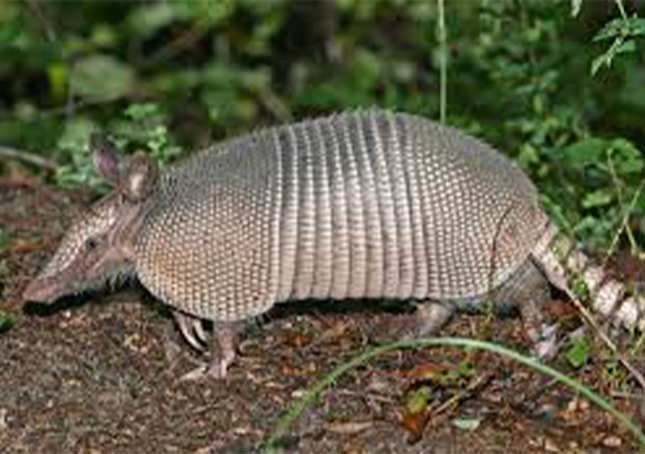Armadillo

Armadillos (meaning “little armored ones” in Spanish) are New World placental mammals in the order Cingulata. The Chlamyphoridae and Dasypodidae are the only surviving families in the order, which is part of the superorder Xenarthra, along with the anteaters and sloths. Nine extinct genera and 21 extant species of armadillo have been described, some of which are distinguished by the number of bands on their armor.
All species are native to the Americas, where they inhabit a variety of different environments.
Armadillos are characterized by a leathery armor shell and long sharp claws for digging. They have short legs, but can move quite quickly. The average length of an armadillo is about 75 cm (30 in), including tail.
The giant armadillo grows up to 150 cm (59 in) and weighs up to 54 kg (119 lb), while the pink fairy armadillo has a length of only 13–15 cm (5–6 in). When threatened by a predator, Tolypeutes species frequently roll up into a ball (these being the only species of Armadillo capable of such).
The word armadillo means “little armored one” in Spanish. The Aztecs called them āyōtōchtli [aːjoːˈtoːt͡ʃt͡ɬi], Nahuatl for “turtle-rabbit”: āyōtl [ˈaːjoːt͡ɬ] (turtle) and tōchtli [ˈtoːt͡ʃt͡ɬi] (rabbit).[1] The Portuguese word for “armadillo” is tatu which is derived from the Tupi language.[2] Similar names are also found in other, especially European, languages.
Recent genetic research suggests that an extinct group of giant armored mammals, the glyptodonts, should be included within the lineage of armadillos, having diverged some 35 million years ago, more recently than previously assumed.
Like all of the Xenarthra lineages, armadillos originated in South America. Due to the continent’s former isolation, they were confined there for most of the Cenozoic. The recent formation of the Isthmus of Panama allowed a few members of the family to migrate northward into southern North America by the early Pleistocene, as part of the Great American Interchange. (Some of their much larger cingulate relatives, the pampatheres and chlamyphorid glyptodonts, made the same journey.)
